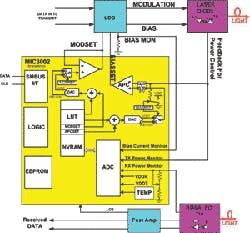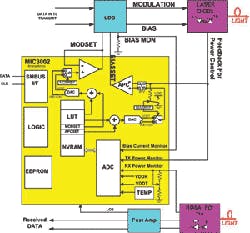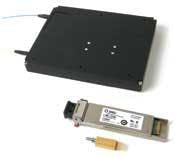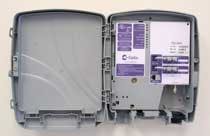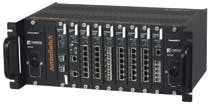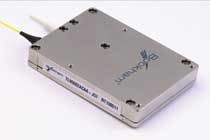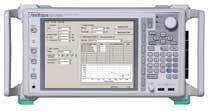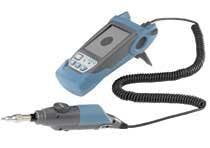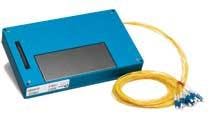A new transmitter optical subassembly (TOSA) is reportedly the smallest available for the DWDM transceiver market. The new TOSA brings full band tunability, or the ability for service providers to change to any wavelength on demand, to pluggable small-form-factor (XFP) transceivers that previously only supported one to two wavelengths. The tunable device will enable service providers to use pluggable small-form-factor products to support 50-GHz channel spacing in metro area networks. It houses the integrated laser Mach-Zehnder (ILMZ) chip that was announced last September, a photonic integrated circuit (PIC) that combines a tunable laser and optical modulator on a tiny chip for smaller, higher-performance tunable devices.
JDSU, www.jdsu.com
GPON optical network terminals
By integrating advanced fiber-to-the-premises (FTTP) and radio-frequency-over-glass (RFoG) technologies, the Calix 725 GPON optical network terminal helps service providers meet consumer demand for advanced broadband and entertainment services over fiber. The ONT supports all of the current and emerging cable RF return path standards, including SCTE standards 55-1 and 55-2, and CableLabs DOCSIS and DOCSIS Set-top Gateway. Service providers can seamlessly deploy the 725 ONT and ensure interoperability with their video headends and conditional access systems. At the subscriber premises, by incorporating RFOG technology into the 725 ONT, any additional packaging or powering requirements have been eliminated.
Calix, www.calix.com
Tunable SFF transponder
A zero-chip variant of the LambdaFLEX TL9000 300-pin transponder is believed to be the industry�s first fully Telcordia-qualified tunable small-form-factor transponder (TSFF). The TSFF�s footprint is 58% smaller than previous-generation tunable LFF (large form factor) transponder products. The 2.2�3-in. size enables network equipment manufacturers to increase port density, placing two SFF transponders on a card where only one LFF would fit. The TL9000 is a direct drop-in replacement for the LFF devices. A standard but flexible platform design is used across all applications, which can reduce lead time, decrease inventory costs, and allow production flexibility and cost optimization. The product can be configured with either a negatively chirped or zero-chirp transmitter for both regional metro and long-haul DWDM applications.
Bookham, www.bookham.com
The flexibility to see traffic on 10GBase-LX4 networks is delivered via the use of 10-Gbit XFP monitoring port interfaces within the LX4 converter tap chassis. An IT operations staff can now use an existing 10-Gbit monitoring tool to safely baseline and measure the traffic on these LX4 networks. The same tool can now be leveraged across OM2 and OM3 fiber installations. Available chassis options include LC-based 62.5- and 50-µm network port connections for 10GBase-LX4 cabling, and SR or LR XFP-based monitoring port interfaces.
Net Optics Inc., www.netoptics.com
The LCoS-based wavelength-selective switch (WSS) reconfigurable optical add/drop multiplexer (ROADM) now features an integrated optical channel monitor (OCM). The WSS OCM is designed to accurately measure channel power for optical signals up to 40 Gbits/sec over a variety of modulation formats, including DPSK. Unlike bulky and expensive test equipment currently available, the new platform is expected to be faster and less complex and not limited by signals from adjacent channels.
Optium Corp., www.optium.com
